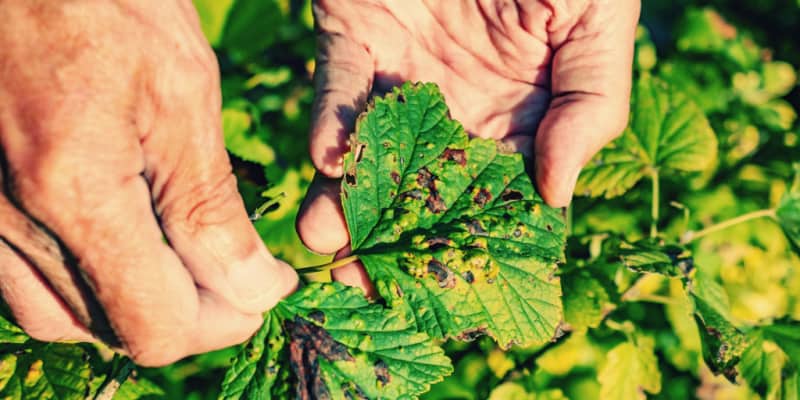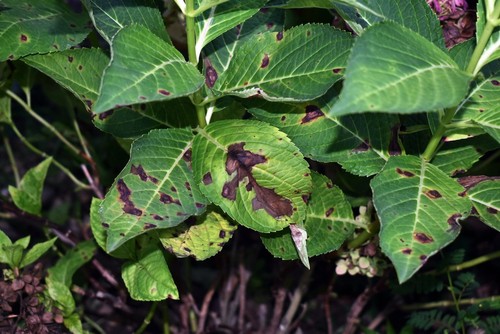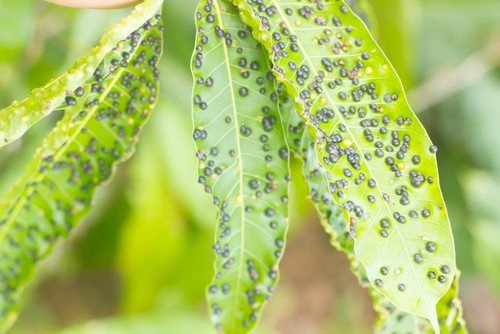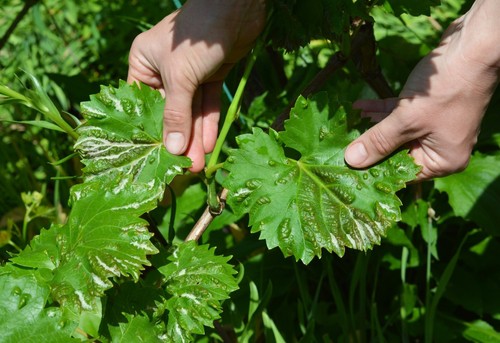
How to Identify and Control Anthracnose Disease
Our site is reader supported, this means we may earn a small commission from Amazon and other affiliates when you buy through links on our site.
What is Anthracnose?
Anthracnose is actually a group of fungal diseases that are related. Believe it or not, it can surprisingly take on varying appearances on different plants, but also at different stages too. This, unfortunately, is one of the reasons it can be a little harder to identify. We have included a series of pictures in this guide to show you how different it can present between plant species.
They typically cause dark discolouration on leaves and dark lesions. I have personally had issues with it on my Hydrangea bushes, and you can see in the picture below the discolouration it can cause.
This disease affects a wide variety of plants including trees, fruits and vegetables. This fungal disease overwinters in dead plants and fallen leaves. Then in the cool and wet spring, it will infect your plants. It also seems to spread more in periods of wet weather.
I have found to control this disease it’s more about preventing it in the first place. You can do this by removing fallen leaves, removing infected plants, and pruning away any affected stems from trees. On occasions, I have used copper fungicide to help prevent it or a Bordeaux mix.
The spread of this disease slows down and even stops in the hot dry summer. Only to start up again in the cooler months of autumn, which is why prevention is key. It’s worth noting that Anthracnose is not usually fatal, it is a disease that leaves your plants disfigured. That being said, I would still remove infected plants and then prune out infected stems of trees, including fruit trees.
How to recognise Anthracnose
Anthracnose manifests as small lesions or wounds in the leaves. The problem is it can be hard to identify Anthracnose from other diseases. One way is to look for small tan or brown pin-head size dots on the underside of the leaves.
As you can see from the pictures I have included in this guide, unlike rust disease, blackspot and even powdery mildew it can present very differently on varying species of plants.
What to do when your plants get Anthracnose?
Prevention
Healthy plants in well-drained soil are far less likely to be infected. Reduce any stresses on your plants by providing them with the best environment as well as proper care to promote strong and healthy growth. This means making sure the soil is free-draining. When it comes to watering, try not to water onto the surface of the leaves. Try to water the base of plants because this reduces the chances of spreading it in the water droplets.
What to do if your plants have Anthracnose
Pick up and dispose of any fallen leaves from infected plants. Cut off any diseased twigs, stems and branches using a clean pair of secateurs. Remember to clean them afterwards to make sure you don’t spread this disease to other plants.
It’s also a good idea to mulch around the base of plants because this also helps to prevent the spread.
Unfortunately, there’s no chemical treatment available to gardeners for Anthracnose, so working hard to prevent the disease from making an appearance in the first place will do wonders.


